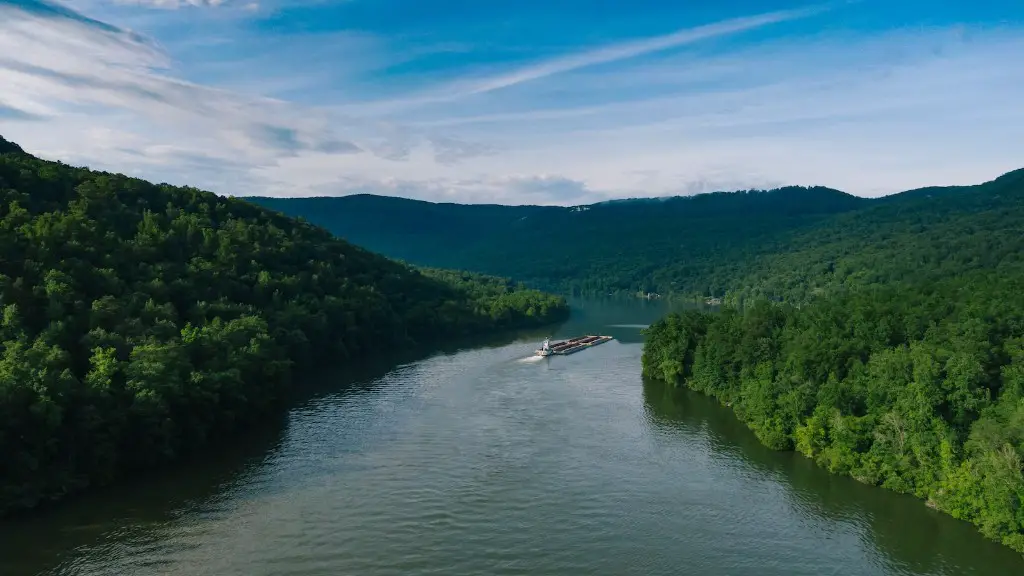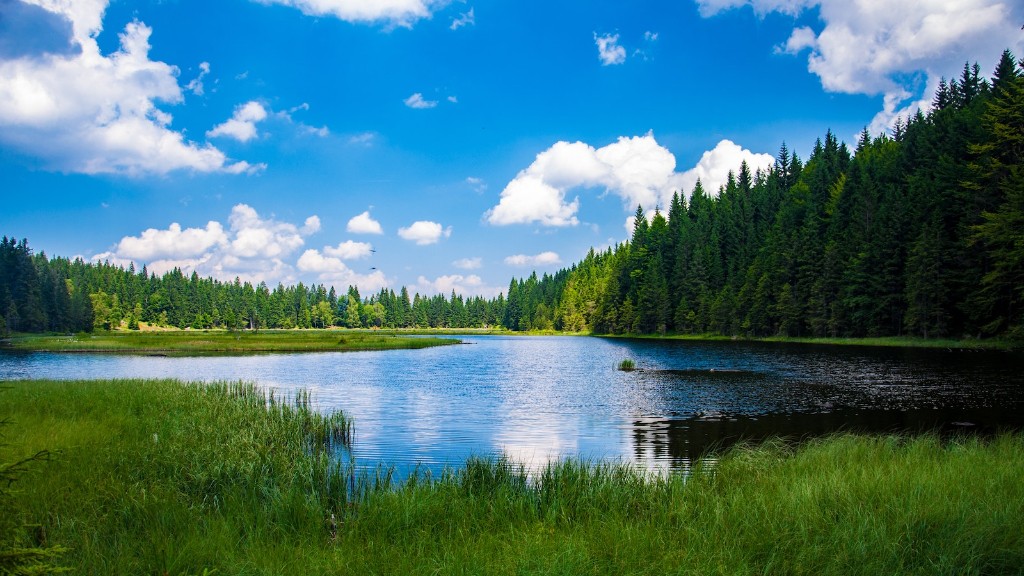The Mississippi River is an iconic North American waterway, but where does the water it carries come from? Even though the river is formed and fed by many smaller tributaries, there are a few key sources for the majority of its water. Before discussing the sources of the Mississippi River, it is important to note that the amount of water flowing through it can vary depending on the time of year or weather conditions.
At its headwaters, the Mississippi River begins with Lake Itasca, a small lake located in northern Minnesota. This lake is fed by thirty rivers and streams, adding to its water levels enough to eventually overflow and form the headwaters of the mighty Mississippi. From here, the water flows in a generally southeastern direction until it reaches the confluence of the Ohio River in southwestern Illinois. The Ohio River increases the size and volume of the Mississippi River and at this point the river begins to flow in a southwesterly direction until it reaches the Gulf of Mexico at the end of its journey.
In addition to the water from these headwaters, the Mississippi River also receives tributaries from other sources, such as the Missouri River, which is the largest tributary to the Mississippi. This river joins the Mississippi near St. Louis and adds to the already substantial water flow. Other important tributaries are the Arkansas, the White, and the Red rivers. These rivers contribute to the mighty Mississippi and extend its reach.
Groundwater also plays an important role in the overall flow of the Mississippi River. As the water flows along its course, groundwater seeps into the river and adds to its volume. This often occurs in low-lying areas, where the water level is lower, and helps to maintain the river’s overall channel and health. Without this contribution, the Mississippi’s water level would be much lower and the river would not be able to sustain the same level of activity.
In addition to the sources discussed above, it is important to note that the Mississippi River is heavily impacted by human activity. Industrial runoff, agricultural fertilizers and wastewater are some of the many pollutants that find their way into the river, often times affected the multitude of activities it supports, from drinking water sources to recreation.
Pollution
One of the biggest environmental threats to the Mississippi River is pollution. Industrial runoff and agricultural fertilizer that finds its way into the water can cause decreased water quality and pose a serious health threat to the wildlife, human and plants that depend on the river for survival. Additionally, water that’s contaminated with pollutants is no longer fit for drinking or swimming purposes. This has been a long-standing challenge for the Mississippi River and its many stakeholders.
In response to this threat, various initiatives have been implemented over the past few decades to address the issue of pollution in the Mississippi River. Improved wastewater treatment and the implementation of pollution regulations have slowly begun to reduce the amount of pollutants that find their way into the river. Additionally, initiatives like The Mississippi River Energy Recovery Project have enabled the growth of clean energy sources along the river. These projects have not only helped to reduce pollution and keep the water clean, but have also created jobs and helped invigorate the local economies.
Ecosystems
Another important element of the Mississippi River ecosystem are its numerous wetlands and marshes. These are essential habitats for a variety of species, including migratory birds, and play a vital role in maintaining the river’s water quality. Unfortunately, the number of wetlands along the river has been decreasing over the past few decades due to development, thus threatening the many species that call these areas home.
In response, various conservation and restoration initiatives have been launched at both the local and federal levels to protect what remains of the wetlands along the river. Restoration efforts, such as replanting mangroves and wetlands vegetation, have been able to partially recover some of these areas and help to ensure their sustainability for the future.
Government agencies, such as the U.S. Army Corps of Engineers, have been in charge of allocating funds for the maintenance and restoration of the wetlands along the river. Additionally, organizations like the Nature Conservancy have helped to preserve and protect these important ecosystems.
The Mississippi River has served as an essential shipping route for centuries and continues to be an important part of the U.S. economy. The river’s various locks and dams help facilitate navigation and cargo transportation, while maintaining a consistent water level throughout the river.
In addition to helping maintain a constant water level, the locks and dams also help prevent flooding in communities along the river. Leveraging the capacity of the locks and dams can allow for better management of the river’s water levels during periods of high-water, reducing the risk of downstream flooding.
The U.S. Army Corps of Engineers has been responsible for managing and maintaining the locks and dams along the river for decades. These installations require constant maintenance and upgrades in order to ensure optimal performance. The Army Corps of Engineers is also responsible for anticipating weather patterns and potential flooding events, and for providing accurate forecasts for the Mississippi River basin.
Water Resources
The Mississippi River is an essential resource for the many communities along its course and the ecosystems it supports. These communities depend on the river for their drinking water, and for other uses such as recreation, fisheries and agriculture.
In order to ensure the river’s water resources are managed properly, the U.S. Army Corps of Engineers divides the Mississippi River into six distinct segments of locks and dams. These system of locks and dams allow for better management of the river’s water resources, and can help reduce the risk of flooding in areas along the river.
In addition to the basic control of the river’s water levels, the U.S. Army Corps of Engineers has also developed a system of reservoirs along the river to store and conserve water. These reservoirs are essential for providing consistent water resources during periods of drought or higher-than-usual amounts of water flow.
Conservation Efforts
In order to ensure the longevity of the Mississippi River and its many environmental, economic and social benefits, various conservation efforts have been put into place. These range from local initiatives to federal policies and regulations aimed at reducing pollution and mitigating environmental degradation.
Controlling the amount of pollutants in the river, particularly during periods of high river flow, is essential for preserving the health of the waterways and the habitats they sustain. Therefore, initiatives such as the Clean Water Act and the development of wastewater treatment processes have been instrumental in reducing pollution and keeping the water clean and safe.
In addition to this, various organizations and non-profits, such as the Nature Conservancy, have helped to restore and preserve the river’s many wetlands and ecosystems. Programs such as The Mississippi River Energy Recovery Project have also been developed to promote clean and sustainable energy sources along the river.
It is clear that the water of the Mississippi River is vital to the life and livelihood of countless Americans, and efforts to conserve and protect this important resource must continue in order to ensure its sustainability for future generations.





